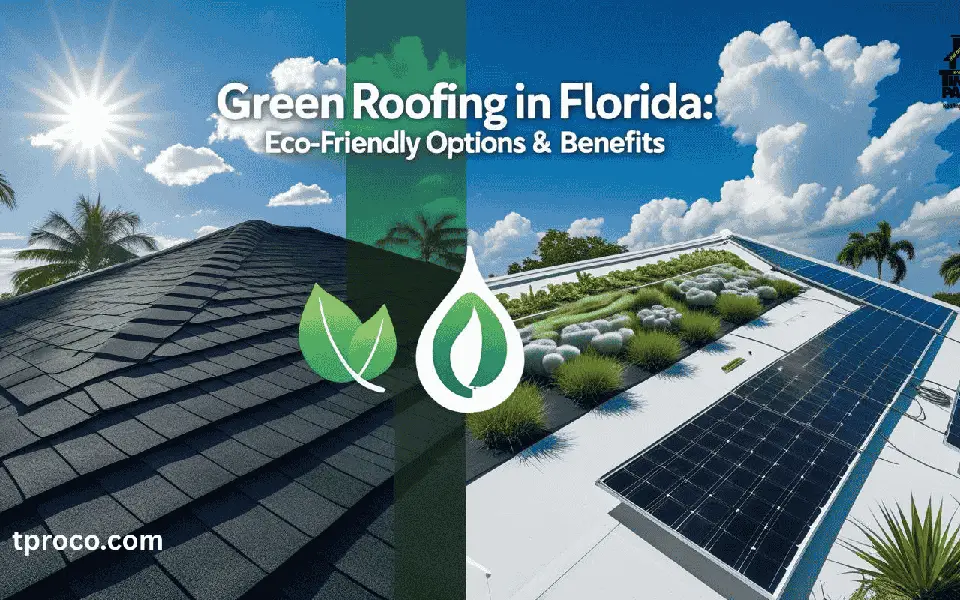Our Blogs
Hurricane Roof Preparation: Keep Your Florida Home Safe with Pro Tips 🏠
Hurricane season can be especially harsh on Florida rooftops—intense winds, torrential rain, and airborne debris put your home at risk. In this blog, we’ll explore everything you need to know about preparing your roof to face the fury of hurricane conditions. You’ll learn how to choose the best protective materials, implement proven reinforcement techniques, and establish a step-by-step plan for emergency situations. Let’s dive in to safeguard your family and investment!

Why This Topic Matters
Hurricanes are a yearly concern for Florida homeowners. The Atlantic hurricane season stretches from June to November, but that doesn’t mean storms can’t form outside that window. According to the National Hurricane Center, even a Category 1 storm can produce wind gusts strong enough to lift roof shingles and damage structural elements.
- Financial Impact: Roof damage can lead to thousands of dollars in repair or replacement costs. Proactive measures may reduce these expenses significantly.
- Safety Concerns: A compromised roof can lead to severe water leakage, mold growth, and potential collapse, endangering your family.
- Insurance Implications: Some insurance providers require proof of preventative steps. Being well-prepared might lead to lower premiums or smoother claim processes.
When you consider the formidable power of hurricanes—Category 3 and above can bring winds over 110 mph—investing time and resources into roof preparation is simply non-negotiable.
Understanding Key Materials and Reinforcement Methods
One of the best defenses against hurricane damage is selecting the right roofing materials. Florida’s climate demands solutions that can handle not just high winds but also torrential rains, salt air, and extreme humidity.
- Hurricane Straps and Clips
- These metal connectors attach roof trusses or rafters to wall plates, improving wind uplift resistance.
- They’re often required by Florida building codes for new construction, but older homes can be retrofitted.
- 🔨 Pro Tip: Always check for corrosion-resistant straps, especially if you live near coastal areas with salty air.
- High-Wind-Resistant Shingles
- Look for shingles rated for 130 mph winds or higher.
- Asphalt shingles with a reinforced fiberglass mat tend to hold up better in hurricanes.
- 💡 Pro Tip: Always verify the manufacturer’s warranty and wind rating before making a purchase.
- Metal Roofing
- Metal panels, when properly installed, can offer superior wind resistance.
- Often more expensive initially, but may last up to 50 years with minimal maintenance.
- 🌱 Eco Note: Metal roofs can reflect solar heat, lowering cooling costs in hot climates like Florida.
- Secondary Water Barriers
- A self-adhering membrane placed under shingles can prevent water intrusion if the primary layer is damaged.
- This extra layer becomes crucial in a hurricane scenario where shingles may be lifted or torn off by high winds.
Building a Windproof Base
Before focusing on surface materials, ensure your roof deck is solid and damage-free. Any rotten or weakened decking should be replaced. Reinforced decking, such as plywood that meets local code thickness, is essential for keeping everything intact under stress.

Step-by-Step Hurricane Roof Preparation
-
Inspection & Evaluation
- Conduct a thorough roof inspection at least once a year—preferably before hurricane season.
- Look for loose shingles, damaged flashing, or signs of water intrusion.
- 🔍 Pro Tip: Use binoculars to scan for lifted shingle edges, granule loss, or other visible defects.
- Repair & Reinforce
- Replace any cracked or missing shingles immediately.
- Secure loose flashing around chimneys or vents.
- Install hurricane straps if not already in place—consult a licensed contractor for best results.
- Clear Debris & Trim Trees
- Remove leaves, branches, and other debris from gutters and downspouts to prevent water backup.
- Trim tree branches away from the roof, ensuring a minimum clearance of 6–10 feet to prevent branches from crashing down.
- Check Ventilation & Seals
- Proper ventilation reduces moisture buildup and extends roof life.
- Inspect caulk and seals around roof penetrations to ensure no water can seep in.
- Secure Loose Items in Your Yard
- Patio furniture, garden décor, and other objects can become dangerous projectiles.
- Store them in a garage or secure shed before a storm arrives.
- Final Walkaround & Documentation
- Take photographs or videos of your roof’s current condition. This documentation will be useful if you need to file an insurance claim.
- Keep a checklist of completed tasks to stay organized and ensure you haven’t overlooked anything.
Emergency Repairs & Safety
Even the most well-prepared roofs can sustain damage during a major hurricane. If you notice immediate signs of leaking or structural damage after a storm, follow these steps cautiously:
- Prioritize Safety
- Wait until conditions are safe before climbing on the roof.
- If water leaks are serious, turn off electricity in the affected area to avoid electrocution risks.
- Temporary Tarping
- Use a heavy-duty tarp to cover exposed areas.
- Secure the tarp with nails or screws, ensuring water cannot pool underneath.
- ⚠️ Pro Tip: Always wear rubber-soled shoes and use a sturdy ladder with someone holding it at the base.
- Contact Professionals
- If the damage is severe, contact a licensed roofing contractor immediately.
- Document the damage thoroughly for insurance purposes before repairs begin.
Handling Insurance & Claims
Your ability to file a successful insurance claim often depends on evidence that you took preventative measures:
- Keep receipts for any upgrades or reinforcements.
- Record the date and extent of professional inspections.
- File claims promptly; many policies have strict deadlines.
Long-Term Maintenance
Hurricane preparation isn’t a one-and-done event. Maintaining a hurricane-resistant roof means regularly monitoring its condition:
- Schedule annual or semi-annual inspections, preferably by a licensed professional.
- Update or replace aging shingles or membranes well before hurricane season begins.
- Take note of small leaks—these can expand quickly under extreme weather conditions.
Conclusion
🌧️ Protecting your Florida home from hurricanes starts at the top—literally. By investing in high-quality materials, reinforcing weak points, and staying vigilant with routine maintenance, you greatly reduce your risk of catastrophic roof damage. Keep accurate records, follow local building codes, and never hesitate to call in professionals for complex tasks. After all, safeguarding your family’s comfort, safety, and finances is well worth the effort.
About the Author

Timothy Parks
📢 Stay Informed: Communication & Consent Updates
At Timothy Parks Roofing & Construction Inc., we prioritize transparency in our communications. By submitting a request, you agree to receive calls, texts, and emails regarding our services. Standard messaging rates may apply. You can opt-out at any time by replying STOP or contacting us directly.
✅ Florida License: #CBCO59592, #CCC1327217, #HI4878
📌 Privacy & Terms: Read our Privacy Policy and Terms of Service.



